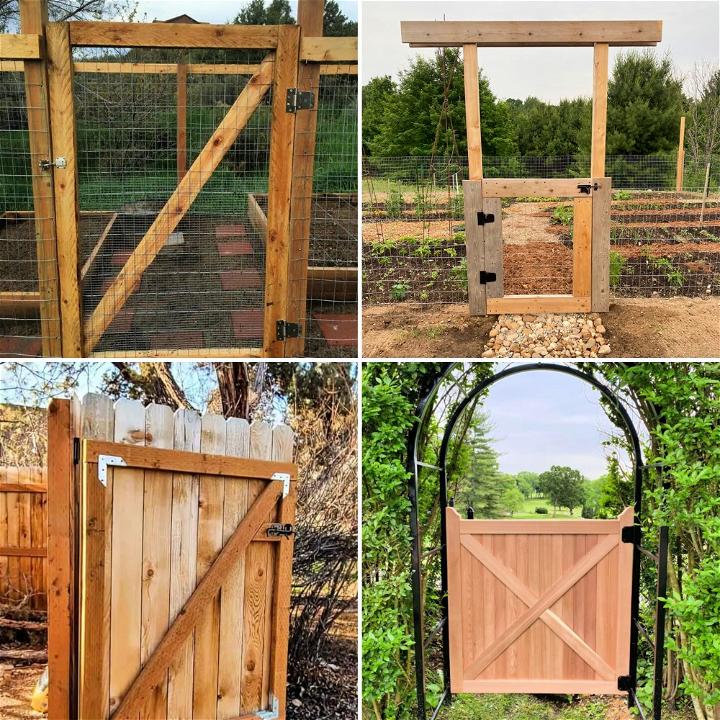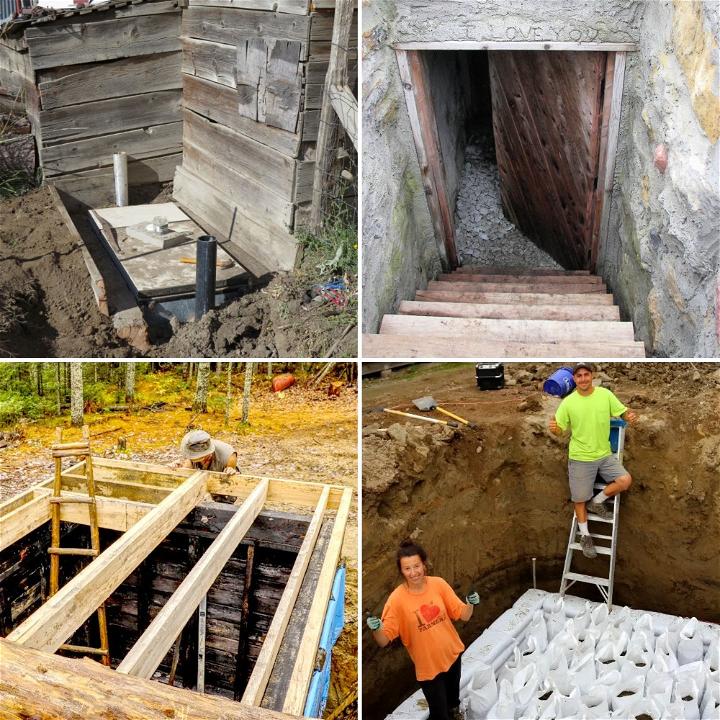Yurts, known as ‘Gers' in Mongolia, are traditional homes that have provided shelter for nomadic tribes in Central Asia for millennia. These round tents, constructed from a lattice of wood and covered in felt, are designed for quick assembly and disassembly, catering to the nomadic lifestyle. The circular design is not just for aesthetic appeal; it offers practical benefits such as stability against strong winds and efficient heat distribution.
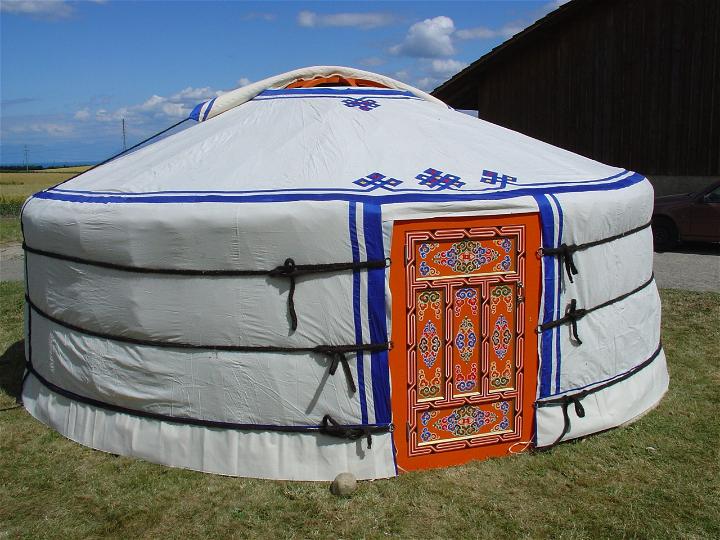
Modern Adaptations
Today, yurts have been embraced globally, particularly by those seeking sustainable and minimalist living solutions. Modern yurts often incorporate materials like metal framing and insulation, expanding their use beyond traditional settings to serve as studios, guesthouses, or even permanent homes.
Choosing the Right Location
Discover how to choose the right yurt location, considering climate, terrain, accessibility, legal compliance, and differences between fabric and wooden yurts.
Climate and Terrain Considerations
The ideal location for a yurt must take into account the climate and terrain. Yurts are versatile structures that can withstand various weather conditions, but the site should offer protection from extreme elements. Flat and stable ground is preferable for setting up a yurt, ensuring stability and ease of construction.
Accessibility and Legal Compliance
Accessibility is crucial, especially if frequent visits or material transport is necessary. It's also vital to comply with local zoning laws and building codes, which may influence the placement of your yurt and require specific permits.
Fabric vs. Wooden Yurts
When selecting a yurt, one must decide between the traditional fabric yurt, which is highly portable, and the wooden yurt, which offers better insulation and resembles a more permanent structure. For colder climates, proper insulation and a heat source capable of heating double the yurt's square footage are recommended to maintain warmth.
By considering these aspects, you can ensure your yurt is sustainable and legal.
How to Build a Yurt - Step by Step Guide
Building a yurt in the woods is a fun project for outdoor enthusiasts. Follow the guide to make your own retreat.
Step by Step Instructions
Step 1: Gather Your Yurt Components
Before starting, ensure you have all the necessary parts:
- Door frame
- Lattice wall
- Roof ring
- Roof rafters
- Top and sidewall covering
Step 2: Prepare the Site
Choose a flat, open area in the woods. Clear the ground of debris and level it as much as possible to provide a stable foundation for your yurt.
Step 3: Assemble the Door Frame
If your door frame isn't already assembled, put it together according to the manufacturer's instructions. Ensure it's sturdy and ready to support the yurt structure.
Step 4: Unroll and Set Up the Lattice Wall
Lay the lattice wall flat on the ground and gently unfold it, forming a circular shape. This wall will provide structure to your yurt, so try to get it as round as possible.
Step 5: Install the Door Frame
Align the holes in your door frame with the corresponding ends of the lattice wall. Secure them together, laying the foundation for your yurt's shape.
Step 6: Add Support with a Runner
Wrap a runner around the top of the lattice wall for added support. Don't tighten it fully yet as adjustments will be needed once the roof rafters are in place.
Step 7: Position the Roof Ring
This step might require an extra set of hands. Place one side of the roof ring in position and gradually work your way around, securing each section until the ring is fully supported by the roof rafters.
Step 8: Assemble the Roof Rafters
Insert the roof rafters into the roof ring, spacing them evenly around the circumference of the yurt. Adjust the tension on the runner from step 6 as necessary.
Step 9: Attach the Top and Sidewall Covering
Remove some bolts from the door frame to attach the top and sidewall covering. Start from the door and work your way around, securing the covering over the lattice wall and roof rafters.
Step 10: Add the Roof Cover
Finally, place the roof cover over the structure. This step brings your yurt to completion, making it ready for interior decorations and furnishings.
Tips for Success
- Take your time with each step, especially when working alone.
- Regular maintenance will extend the life of your yurt.
- Personalize your yurt with interior designs that reflect your style and meet your needs.
Video Tutorial
For a step-by-step video tutorial on building a yurt in the woods, watch this YouTube video.
It pairs well with this written guide, offering visual clarity on assembling your woodland yurt, ensuring a smooth and understandable learning experience.
By following this guide and watching the video, you'll be on your way to enjoying your own yurt in the woods.
Insulation and Weatherproofing for Yurts
Discover essential tips on insulation and weatherproofing for yurts, including understanding needs, choosing materials, and implementing strategies.
Understanding Insulation Needs
Insulation is key to making a yurt comfortable year-round. The right insulation can prevent heat from escaping during cold months and reflect heat away on hot days. It also prevents moisture buildup, which is crucial for maintaining the yurt's integrity.
Choosing Insulation Materials
Reflective bubble foil insulation is highly recommended for yurts. It's thin, which saves interior space, and reflects up to 96% of radiant heat back to its source. When seams are sealed, it also acts as a vapor barrier, preventing moisture passage.
Weatherproofing Strategies
Weatherproofing involves more than just insulation. It includes:
- Sealing gaps to prevent drafts
- Using weather-resistant materials for the outer layer
- Regularly checking for and repairing any damage to the yurt's exterior
Interior Decoration and Furnishing for Yurts
Explore the best interior decoration and furnishing tips for yurts, including space maximization, decor aesthetics, and lighting accessories.
Maximizing Space
The circular shape of yurts provides a unique challenge for decoration and furnishing. Here are some tips:
- Use multi-functional furniture that can be easily moved or folded away
- Consider built-in storage to save space
- Place large furniture pieces like beds and sofas against the wall to maximize floor space
Decor Aesthetics
Decorating a yurt should reflect personal style while maintaining functionality. Light colors can make the space feel larger, and natural materials like wood and wool add warmth and texture.
Lighting and Accessories
Proper lighting is essential. Skylights and strategically placed lamps can enhance the natural light. Accessories like rugs and cushions can add color and comfort without taking up too much space.
By focusing on insulation, weatherproofing, and smart interior design, you can build a yurt that is not only aesthetically pleasing but also comfortable and sustainable throughout the seasons.
FAQs About DIY Yurts
Discover answers to all your DIY yurt questions in this comprehensive FAQ guide. Learn how to build, decorate, and maintain your very own yurt today!
What is a Yurt?
A yurt is a portable, round tent traditionally used by nomads in the steppes of Central Asia. Modern yurts may include wooden frames, insulated walls, and durable fabric covers.
How Much Does It Cost to Build a Yurt?
The cost can vary widely based on size, materials, and location. A basic DIY yurt can be constructed for as little as $1,000, but more elaborate setups can cost several thousand dollars.
Do I Need a Permit to Build a Yurt?
Permit requirements differ by location. It's essential to check with local authorities about building codes and zoning regulations before constructing a yurt.
What Materials Are Needed for a Yurt?
Typical materials include a wooden frame, canvas or vinyl covering, insulation, and a platform or deck for the base. The specific materials can vary based on the design and climate.
Can I Build a Yurt on My Own?
Yes, with some basic construction skills and tools, you can build a yurt. It's helpful to have a friend assist with the assembly.
How Do I Insulate a Yurt?
Insulation options include felt bubble wrap, and modern synthetic materials. The choice depends on the climate and your comfort needs.
How Long Does It Take to Build a Yurt?
Building a yurt can take anywhere from a few days to several weeks, depending on the complexity of the design and your level of experience.
Is a Yurt Suitable for All Climates?
Yurts can be adapted for various climates by using appropriate insulation, heating, and cooling systems. They are known for their resilience in both hot and cold weather.
How Do I Heat a Yurt?
Common heating options include wood stoves, pellet stoves, and portable heaters. Ensure proper ventilation and follow safety guidelines when installing a heating system.
What Type of Foundation is Required for a Yurt?
A stable and level platform is typically required. This can be a wooden deck or a concrete foundation, depending on the terrain and personal preference.
Can Yurts Be Used as Permanent Homes?
While traditionally used as temporary structures, many people now use yurts as permanent or semi-permanent homes, especially when equipped with modern amenities.
Building a yurt is a rewarding project that connects you with a traditional way of living while allowing for modern comforts. Always prioritize safety and legal compliance in your yurt-building adventure.
Discover 15 Detailed DIY Yurt Plans for Building Your Own Beautiful and Unique Yurt at Home
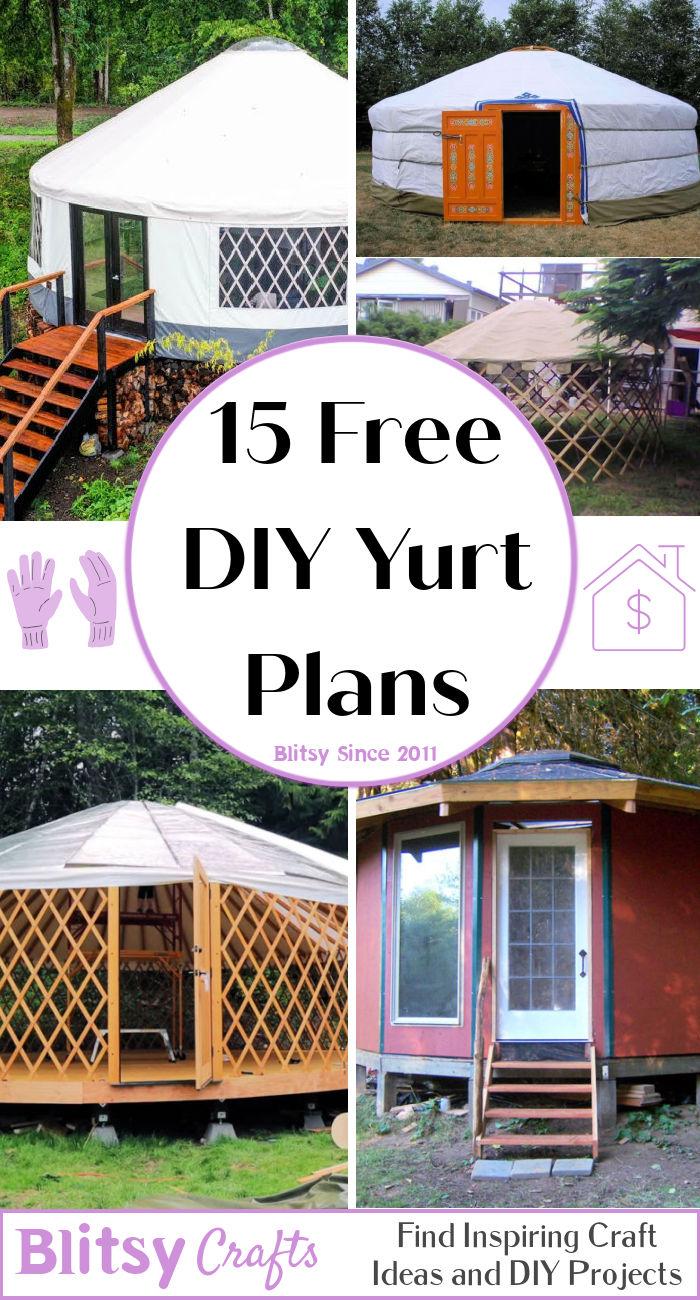
1. How to Make a Mongolian Yurt
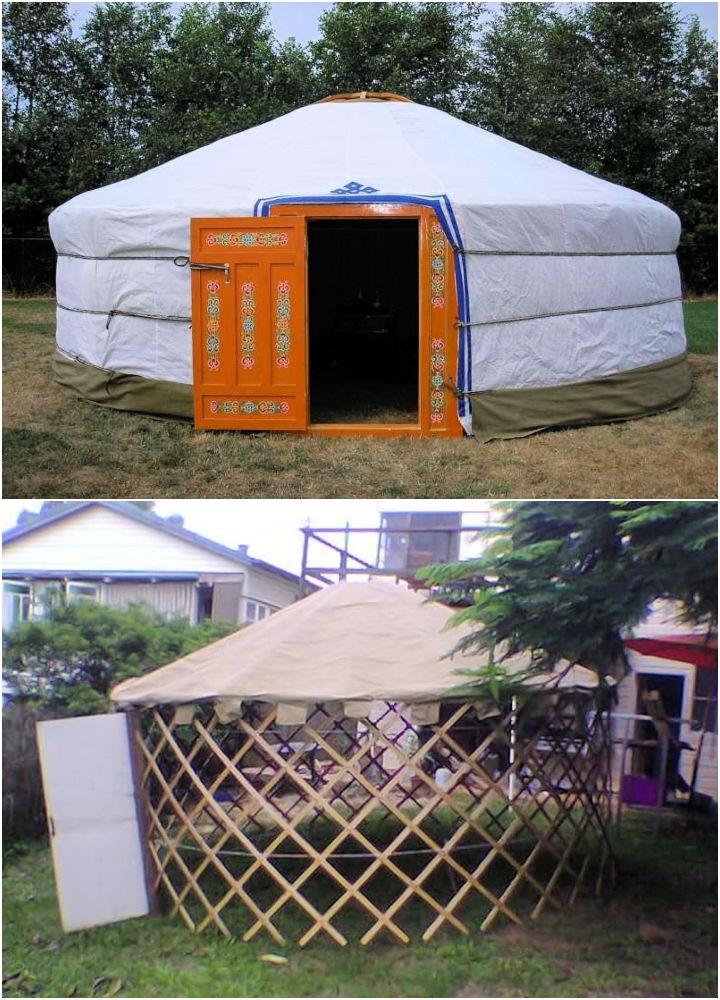
A Mongolian yurt brings traditional charm to modern living. Its circular design promotes unity and flow, making it a cozy, communal space. Perfect for those wanting a taste of the nomadic lifestyle with a sturdy yet adaptable structure.
2. Building a Yurt from Scratch
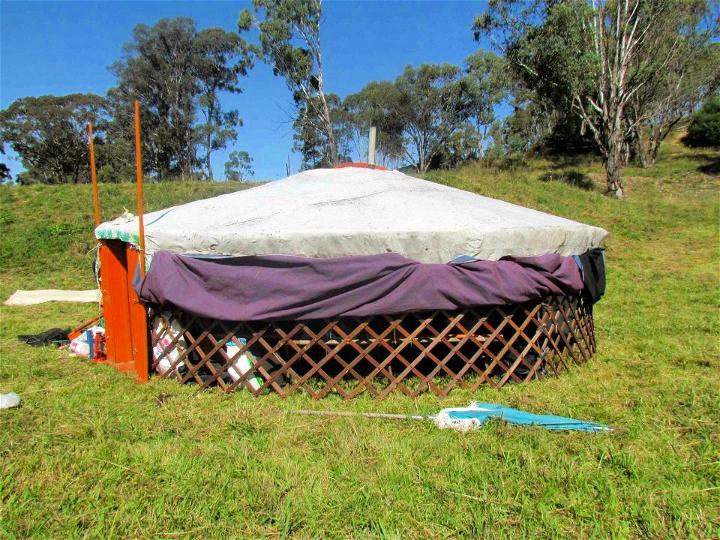
Embarking on building a yurt from scratch offers a hands-on approach to building a unique, personalized living space. It's a project that marries simplicity with functionality, ideal for both nature enthusiasts and those seeking a minimalist lifestyle.
3. How to Make PVC Yurt

A PVC yurt introduces an innovative twist to traditional yurt making. It's lightweight, cost-effective, and surprisingly resilient, perfect for temporary setups or semi-permanent living spaces in milder climates.
4. Making a Yurt for RV

Transforming your RV experience with a yurt addition combines the mobility of an RV with the spacious, homey feel of a yurt. It's an ingenious solution for those craving extra room and a touch of homeliness on their travels.
5. How to Build Your Own Yurt
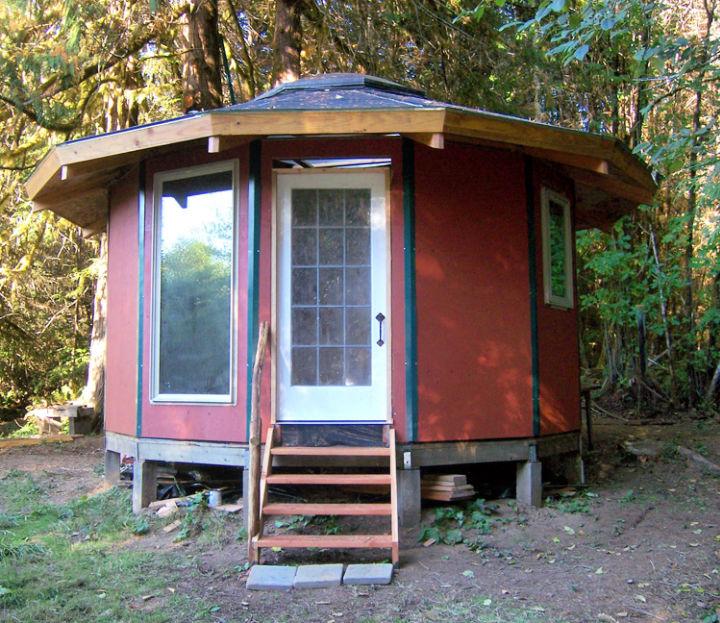
Building your own yurt is an empowering project that lets you tailor every aspect to fit your needs. It's a pathway to building a sustainable, energy-efficient home that blends seamlessly with its surroundings.
6. Homemade Yurt

Making a homemade yurt is about bringing personal flair to eco-friendly living. This project is suited for DIY enthusiasts looking to forge a deeper connection with their living space through craftsmanship and customization.
7. Cheap DIY Bamboo Yurt
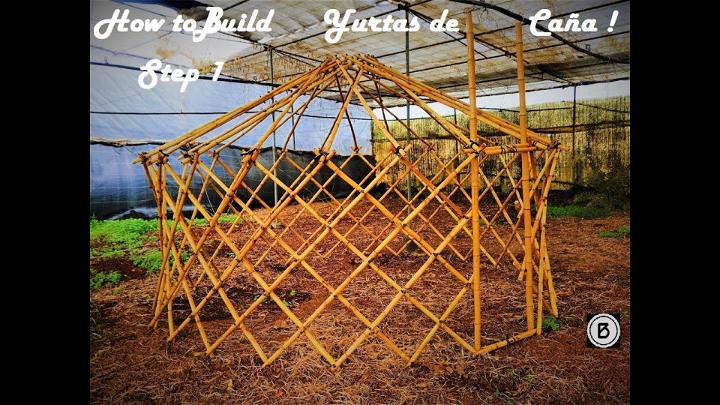
A bamboo yurt is an eco-conscious choice that doesn't skimp on durability. It's a budget-friendly option that appeals to eco-warriors and minimalists alike, offering exceptional strength and a lower carbon footprint.
8. DIY 15 Minutes Permanent Yurt
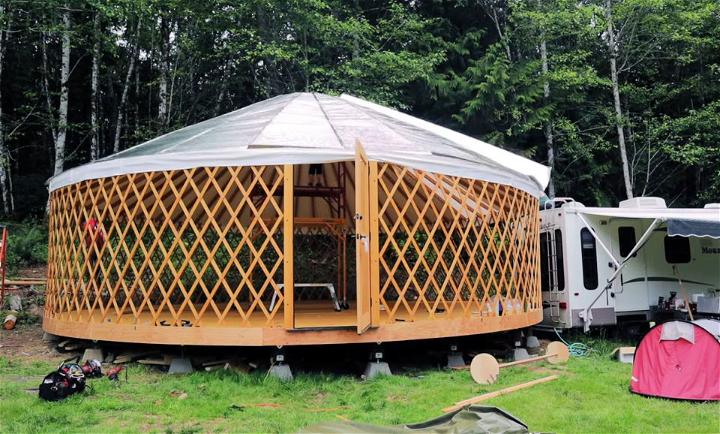
Yes, assembling a permanent yurt in 15 minutes sounds ambitious, but it's doable with modern kits. This quick setup is perfect for those who value both their time and the desire for a steadfast, cozy retreat.
9. Amazing Modern Yurt Design

Modern yurt designs integrate luxurious features and innovative technologies into the classic yurt structure. This approach suits those who love the yurt's ethos but don't want to compromise on contemporary comforts.
10. How to Construct Yurt

Constructing a yurt is an engaging endeavor that combines traditional craftsmanship with personal expression. It's a journey suitable for those committed to eco-conscious living and building a space that resonates with their values.
11. How to Build a Yurt at Home
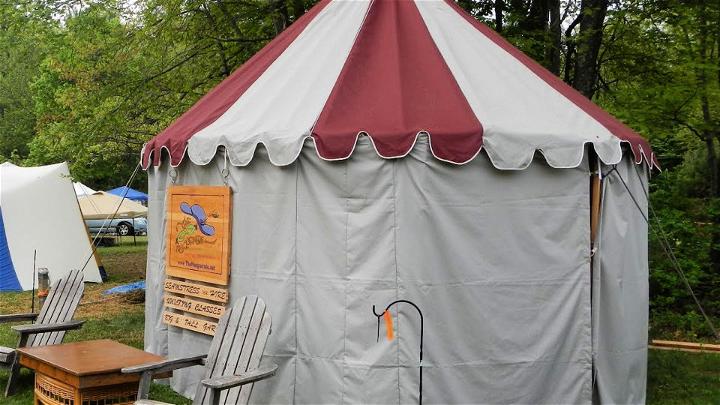
Building a yurt at home invites an adventure right in your backyard. It's a fantastic project for families or individuals looking to explore alternative living spaces that are both functional and charming.
12. Wooden Yurt Building Plan
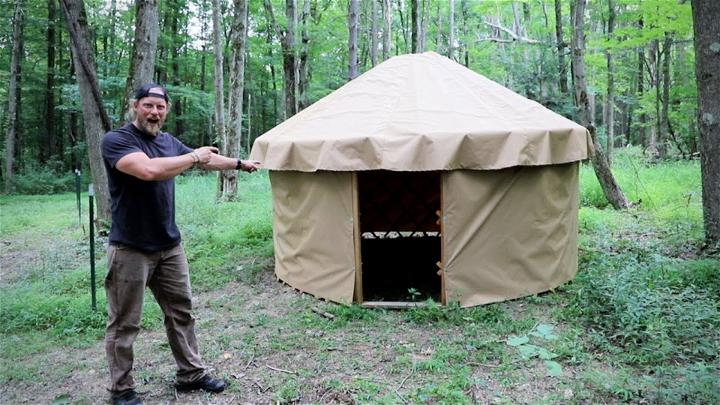
A wooden yurt building plan lays the foundation for a sturdy, enduring home with a natural aesthetic. It's ideal for those aiming for a blend of rustic appeal and the timeless yurt shape, offering warmth and stability.
13. Making a Traditional Yurt
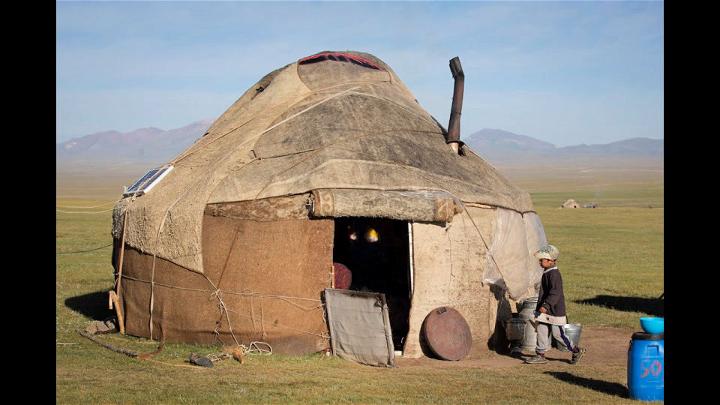
Making a traditional yurt connects you with centuries of nomadic culture. This method focuses on using natural, sustainable materials and time-honored techniques, perfect for history buffs and sustainability advocates.
14. Build a Wooden Yurt
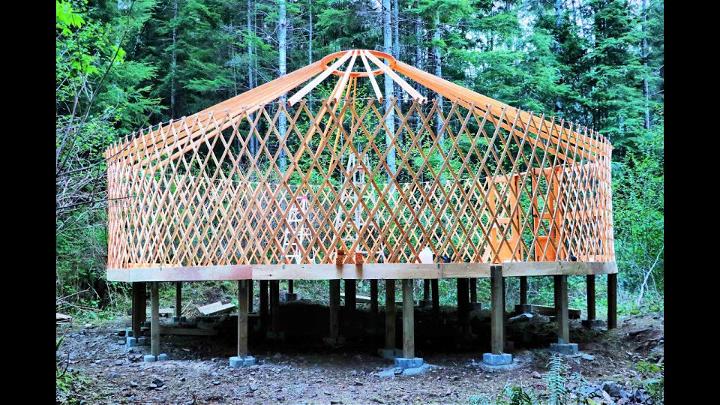
Building a wooden yurt is about building a robust and earthy living space. It's tailored for those who prefer the warmth of wood and are looking for a durable, all-season home that reflects their environmental ethos.
15. Building a Yurt in 3 Days
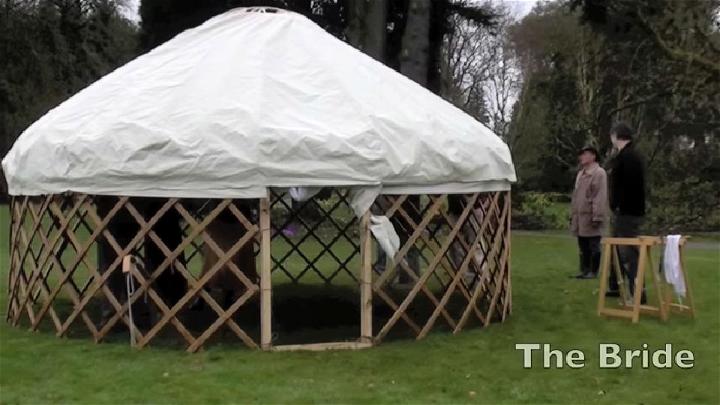
Taking on the challenge of building a yurt in three days is a testament to the structure's ingenuity and simplicity. It's a fast-tracked way to a versatile, inviting space, suitable for quick setups at campsites, retreats, or even in your own backyard.
Conclusion:
In conclusion, building a yurt is a unique and rewarding experience that offers a sustainable and eco-friendly housing solution. From selecting the right materials to constructing the frame and adding finishing touches, this guide has provided you with the essential steps to build your own yurt. Incorporating traditional techniques with modern innovations, building a yurt is a fulfilling project for eco-conscious individuals.












